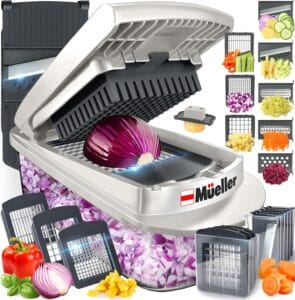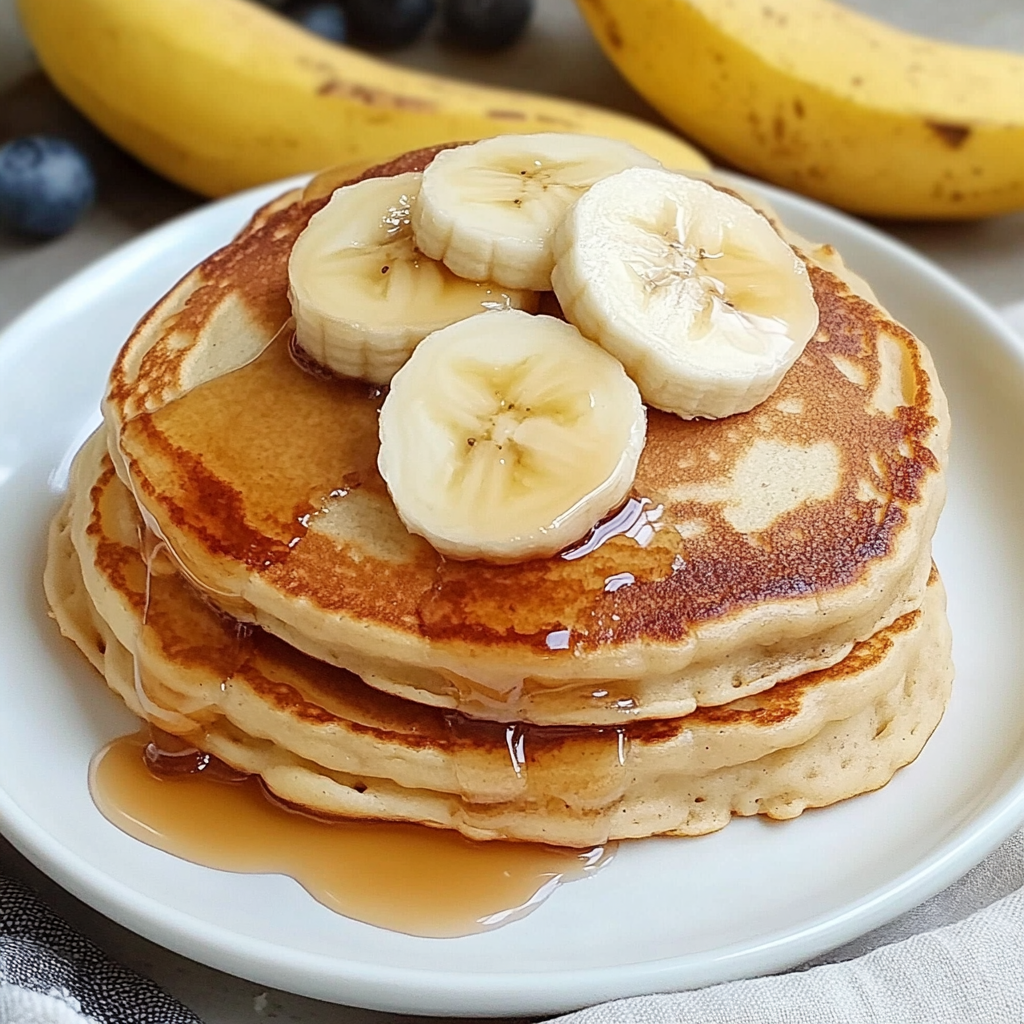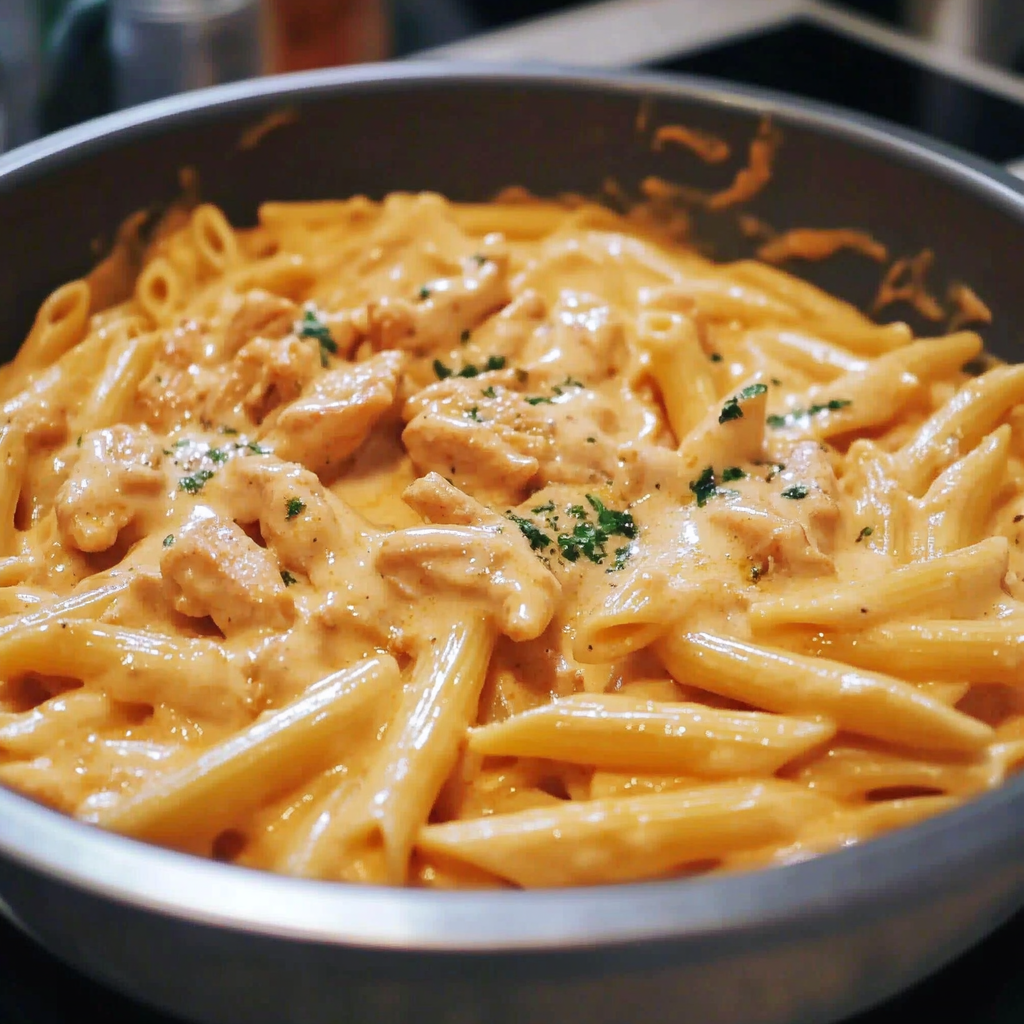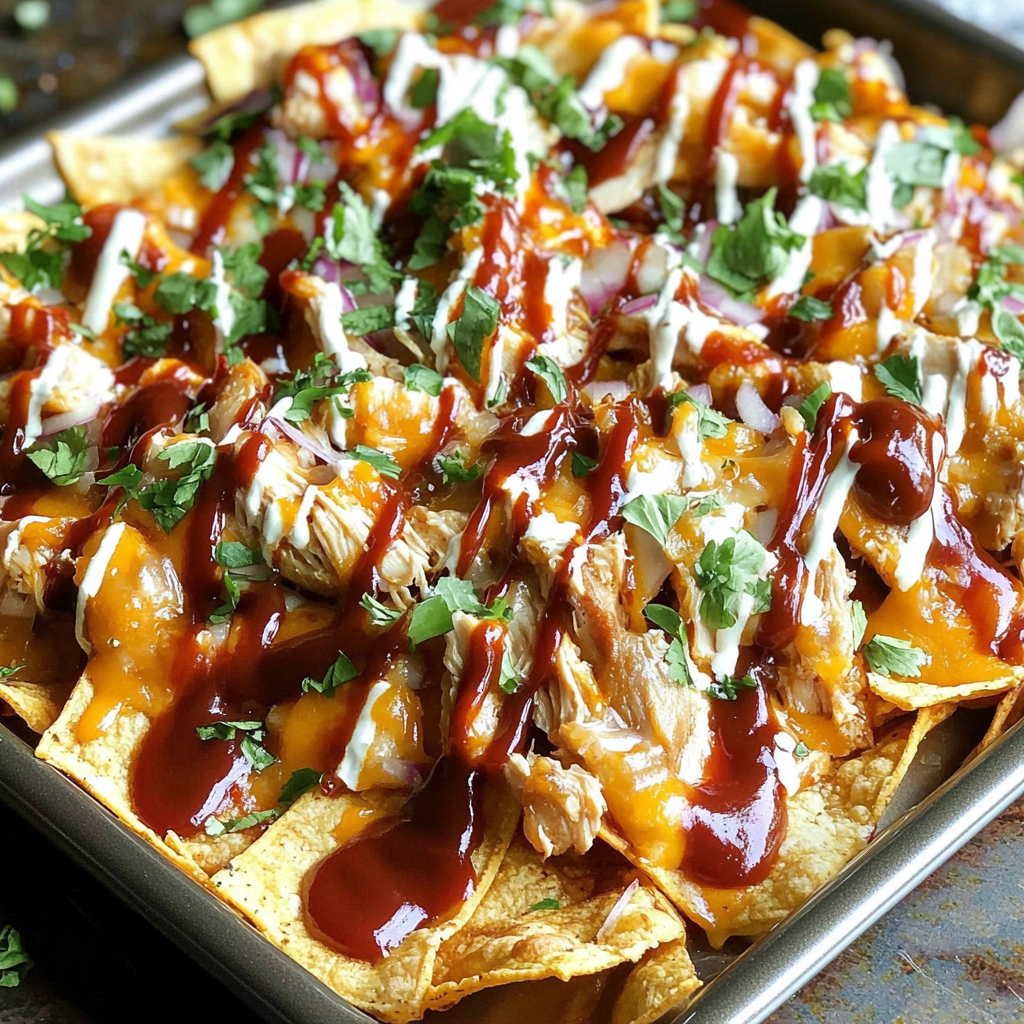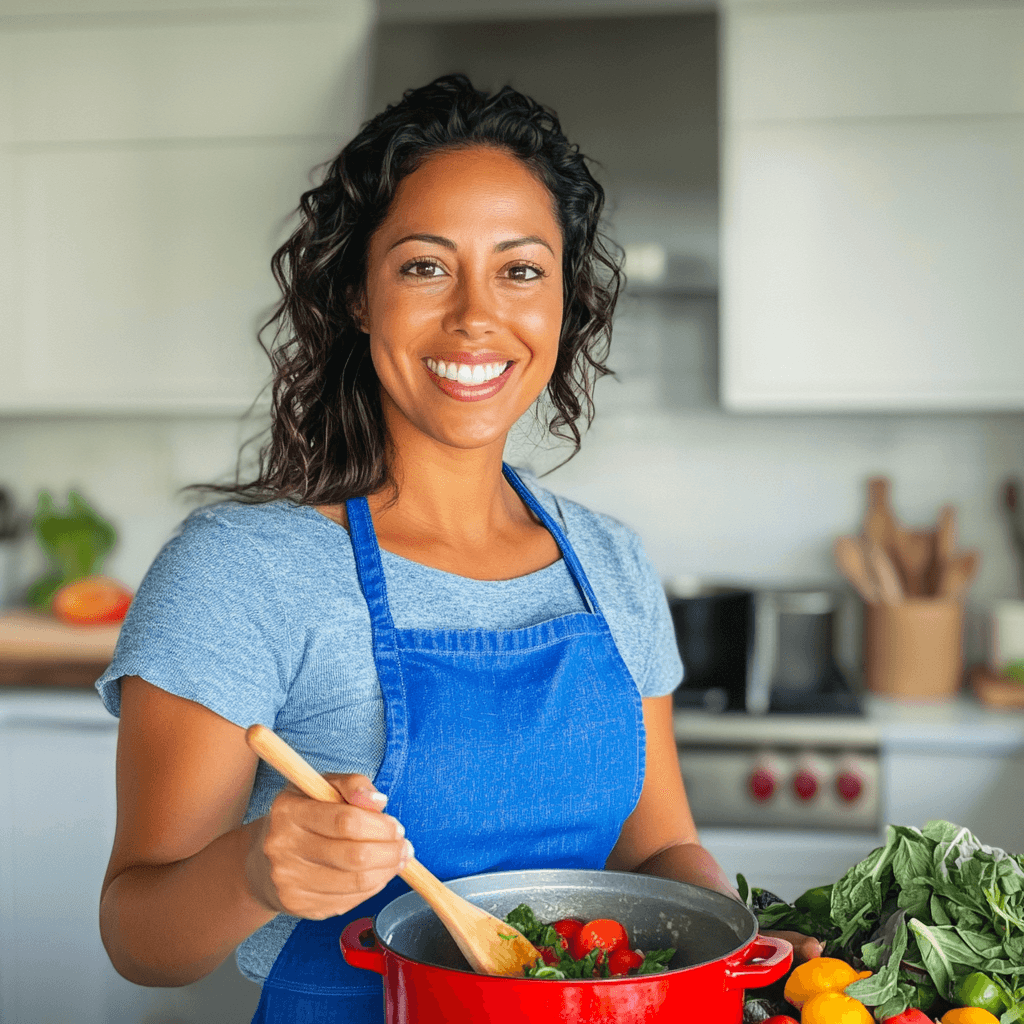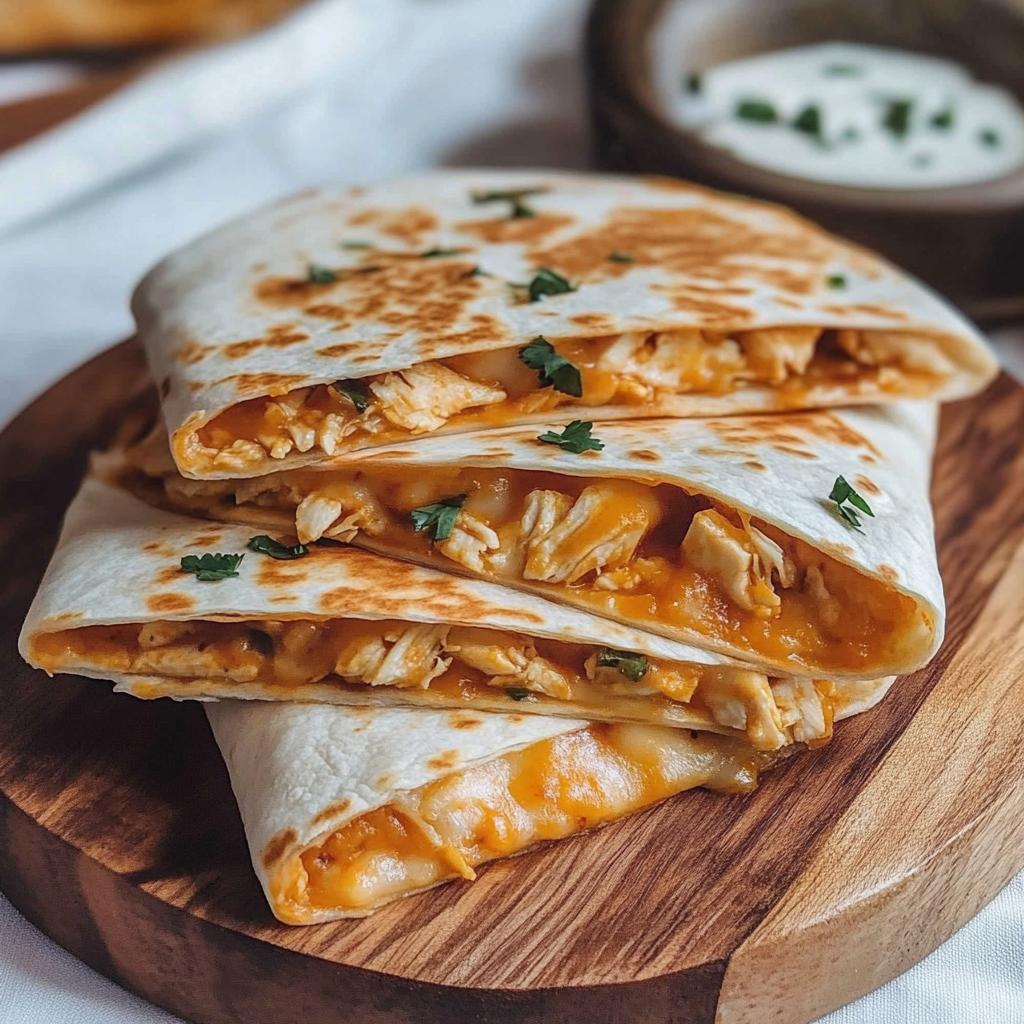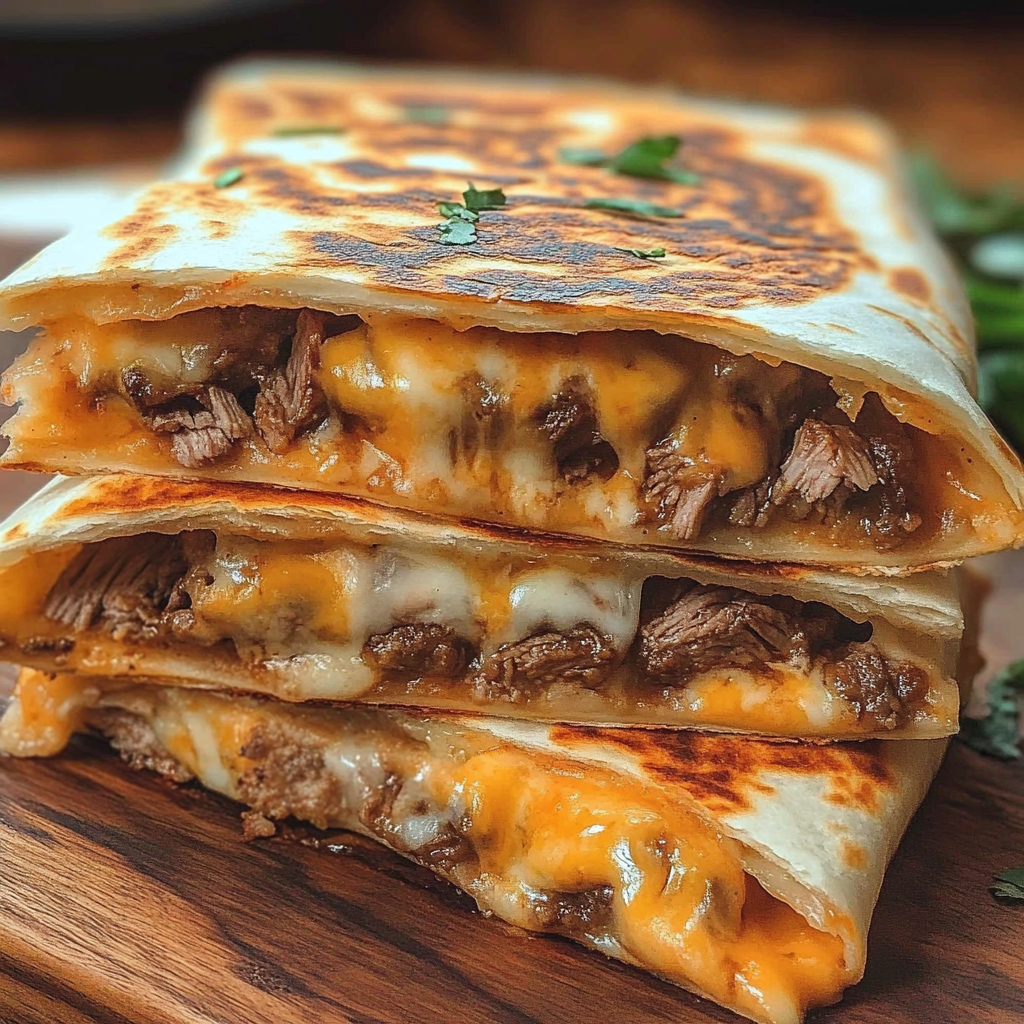Introduction and Key Insights
If you want to indulge in a truly delightful dish that embodies the essence of Italian cooking, the Spaghetti Carbonara Recipe is your go-to option. This classic pasta dish combines a few simple yet high-quality ingredients to create a wonderfully rich and creamy sauce that clings to perfectly cooked spaghetti. Originating from Rome, this dish has become a favorite among pasta lovers worldwide. The beauty of this recipe lies in its simplicity; you won’t need an extensive list of ingredients or complicated techniques to achieve restaurant-quality results at home.
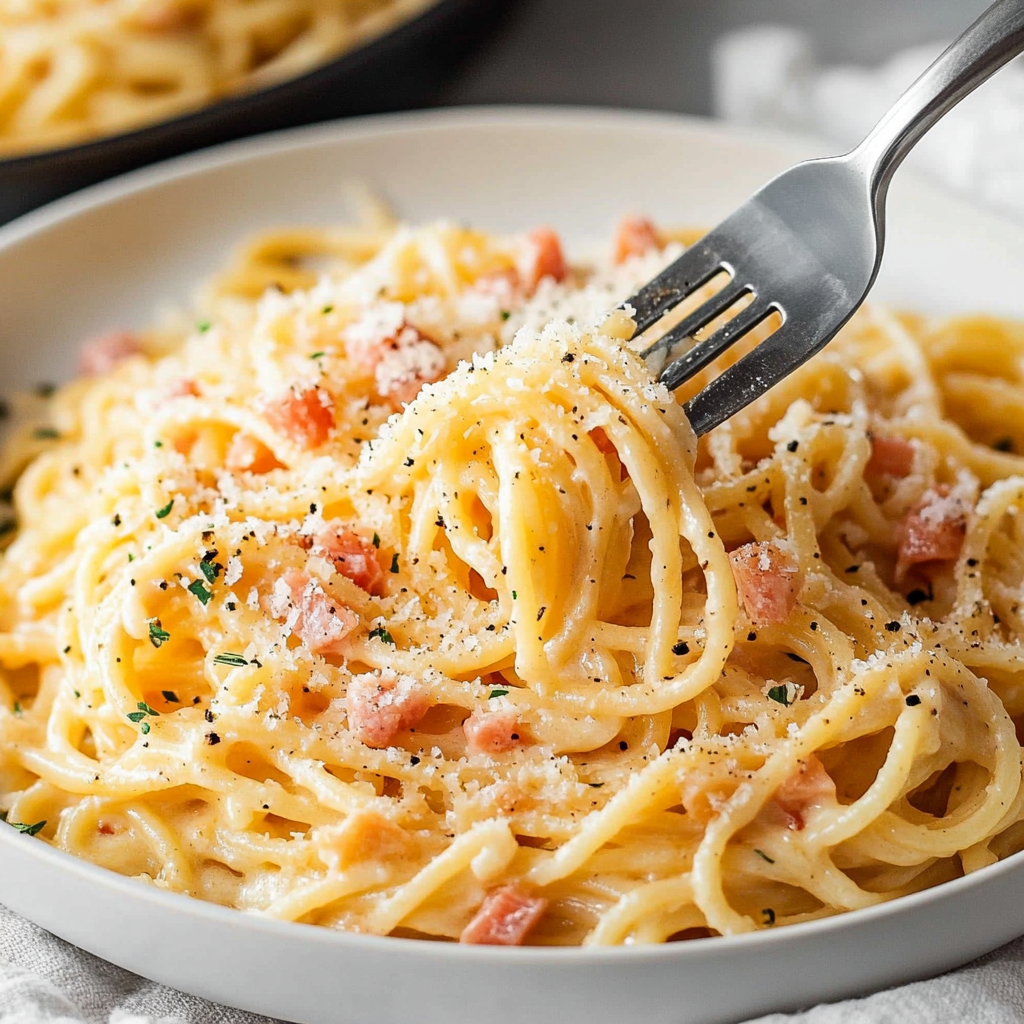
In this guide, we will walk you through everything you need to know about making the perfect spaghetti carbonara. From understanding the essential ingredients to mastering the cooking techniques involved, you will be equipped with all the knowledge needed to impress your family and friends. We will also provide tips on how to serve and store your carbonara effectively. By incorporating our detailed instructions into your cooking routine, you’ll soon find that whipping up a delicious spaghetti carbonara can be both quick and satisfying.
Let’s dive into this culinary journey where flavor meets simplicity, ensuring that your next dinner party or family meal is a memorable one.
Ingredients Overview for Spaghetti Carbonara Recipe
Spaghetti
The star ingredient of our spaghetti carbonara is obviously spaghetti itself. For this recipe, you’ll need about 400 grams (14 ounces) of dried spaghetti. Choose high-quality pasta made from durum wheat semolina for the best texture and taste. Cooking time typically ranges from 8 to 10 minutes until it reaches al dente perfection. Remember to reserve some pasta water before draining; it can help adjust the sauce’s consistency later.
Eggs
Eggs play a crucial role in achieving that creamy texture without using heavy cream. You will need 3 large eggs for this recipe—2 whole eggs and 1 egg yolk. The yolk adds richness while the whites help bind everything together. Use fresh eggs for optimal flavor and avoid overcooking them during preparation; they should be gently mixed into the hot pasta off the heat.
Pecorino Romano Cheese
Pecorino Romano cheese is a sharp sheep’s milk cheese that adds depth of flavor to your dish. You’ll require around 100 grams (about 1 cup) of finely grated cheese for the recipe. Its saltiness contrasts beautifully with the other ingredients and enhances overall taste. If unavailable, Parmigiano-Reggiano can be used as a substitute but may alter authenticity slightly.
Pancetta
Pancetta is an Italian cured meat that brings savory richness to our carbonara. For this recipe, use approximately 150 grams (5 ounces) of diced pancetta or guanciale if available—this traditional option offers intense flavor due to its higher fat content. Cook it until crispy; this step is essential for obtaining that desired texture in each bite.
Black Pepper
Freshly cracked black pepper is vital for seasoning our dish properly; it adds warmth and complexity without overwhelming flavors. Use about 1 teaspoon or more according to taste preferences when mixing it into your sauce. Always opt for freshly ground peppercorns rather than pre-ground ones for maximum aroma.
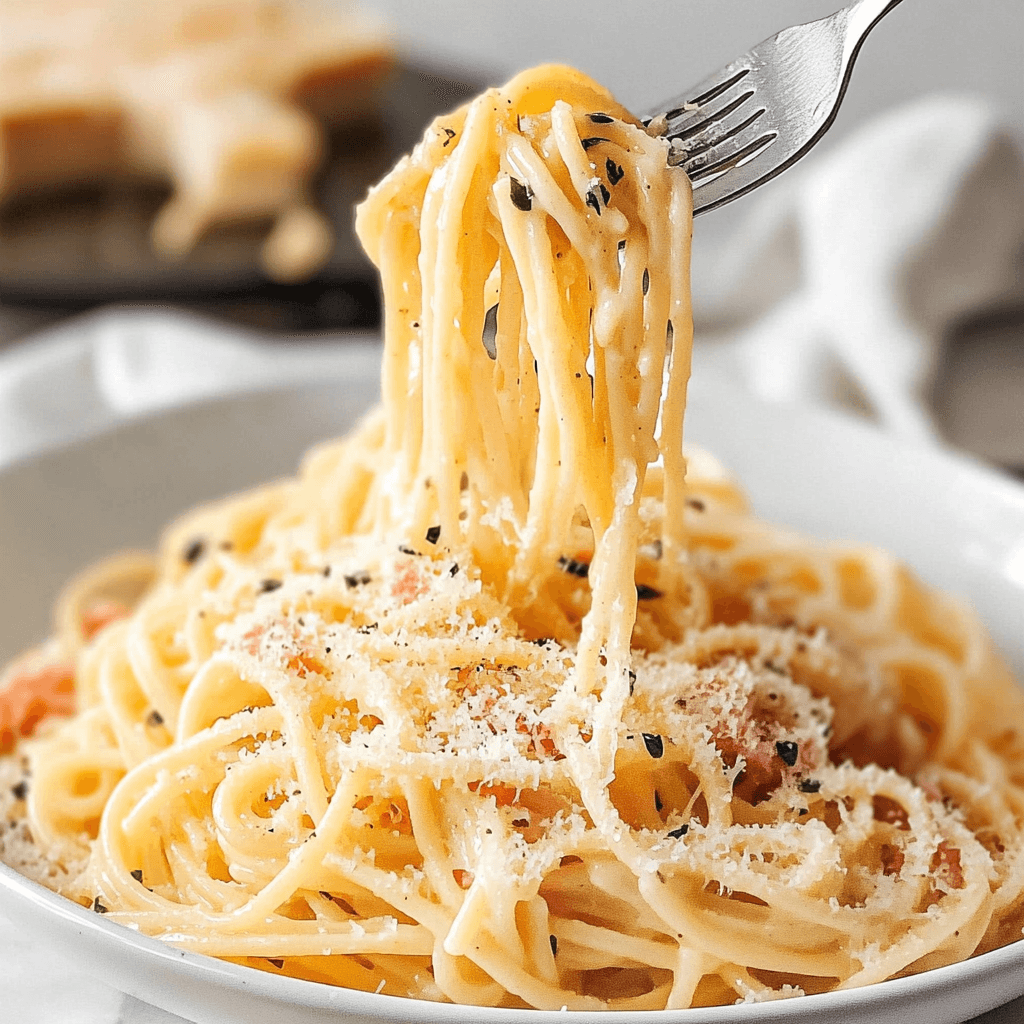
How to Prepare Spaghetti Carbonara Recipe
Step 1: Boil the Pasta
Begin by bringing a large pot of salted water to boil over high heat—ideally using about 4 quarts (liters) of water per pound of pasta helps maintain temperature once added. Once boiling vigorously, add your spaghetti carefully so as not to splash hot water on yourself or others nearby. Stir occasionally during cooking time; check doneness after 8 minutes or so but aim for al dente texture since residual heat will continue cooking even after drained.
While waiting on the pasta’s completion time frame—set aside about one cup (240 ml) of starchy cooking water before draining fully through colander—it serves as an excellent tool later when adjusting sauce consistency.
Step 2: Cook Pancetta
Next up: focus on creating those crispy bits by heating extra virgin olive oil in a large skillet over medium heat—around two tablespoons should suffice. Once heated sufficiently (approximately 2 minutes), add diced pancetta into your pan; cook while stirring frequently until golden brown and crispy (about five minutes). This process intensifies flavors while rendering out excess fat which contributes significantly towards final texture profile achieved within dish itself.
Once done correctly—drain excess grease if necessary but reserving some remains within pan enhances flavor throughout remaining steps ahead…
Step 3: Prepare Sauce Mixture
In a separate bowl—whisk together prepared eggs along with finely grated Pecorino Romano cheese until smooth—creating something akin to custard-like consistency here. Season mixture lightly with fresh cracked black pepper too since these elements combined create base layer holding all wonderful components present throughout entire experience wrapped inside warm comforting embrace provided by creamy goodness left behind afterward.
Ensure no lumps remain within mixture before moving onto next stage where synergy occurs between previously cooked elements alongside new additions arriving shortly thereafter…
Step 4: Combine Ingredients
With drained spaghetti still hot from boiling point earlier—you’re ready now. Carefully add piping hot noodles directly into skillet containing crispy pancetta along with rendered fats still lingering inside which enhances overall taste immensely. Toss everything thoroughly using tongs while simultaneously pouring egg-and-cheese blend atop noodles too; mixing continuously ensures even coating occurs facilitating creaminess desired without risk overcooking delicate egg proteins surrounding individual strands present within dish itself.
In case things seem too thick at times during mixing process—remember there’s always reserved starchy water set aside earlier available should adjustments need made accordingly based on preference levels experienced firsthand.

Serving and Storing Tips
Serving Suggestions
To serve your spaghetti carbonara perfectly, start by presenting it in warm bowls or plates—the warmth helps maintain temperature while enhancing overall dining experience enjoyed alongside meal shared among loved ones gathered around table together. Garnish each serving generously with additional grated Pecorino Romano cheese along with freshly cracked black pepper sprinkled atop finishes presentation nicely giving visual appeal everyone appreciates seeing beforehand too.
Pairing options include classic Italian red wines such as Chianti Classico providing depth complementing richness found within creamy sauce itself; alternatively consider crisp white wines like Pinot Grigio refreshing palate between bites taken delightfully savoring every mouthful encountered throughout entire dining experience shared amongst good company gathered close.
Storing Leftovers
If you have any leftovers after indulging in divine flavors offered through this delicious feast—simply store remaining portions within airtight containers placed inside refrigerator where they’ll keep fresh up until three days maximum duration advised hereafter. Reheating methods include microwaving briefly just long enough so warmth returns without drying out precious textures lost otherwise during prolonged heating times often overlooked inadvertently causing unfortunate mishaps encountered instead…
Alternatively utilize stovetop reheating techniques employing low heat combined alongside splash reserved starchy water originally set aside earlier aiding restoration back towards original creaminess experienced firsthand upon initial serving moments previously enjoyed thoroughly without regret whatsoever.
By following these detailed steps accurately outlined above—you’ll have successfully created an irresistible spaghetti carbonara recipe capable of impressing anyone fortunate enough partaking experience shared amidst loving company gathered round table engaging lively conversation while relishing delectable flavors filling hearts souls alike forevermore…
Mistakes to Avoid
One common mistake when preparing the Spaghetti Carbonara Recipe is using the wrong type of pasta. Authentic carbonara traditionally calls for spaghetti, but some people might opt for fettuccine or penne. This can alter the dish’s texture and how the sauce adheres to the noodles. Always stick with spaghetti or another long pasta for a classic result.
Another frequent error involves overcooking the pasta. Cook it until it’s al dente, which means firm to the bite. If you cook it too long, your spaghetti will become mushy and lose its ability to hold the delicious sauce. Always taste test your pasta a minute or two before the package instructions indicate.
Using pre-grated cheese is a mistake often made by cooks wanting convenience. Freshly grated Pecorino Romano offers a richer flavor and better melting properties than pre-packaged options. The fresh version also helps achieve that creamy texture without adding cream, which is a crucial element of the authentic Spaghetti Carbonara Recipe.
Failing to temper the eggs correctly can lead to scrambled eggs in your sauce. To prevent this, gradually mix some hot pasta water into your egg mixture before combining it with your drained spaghetti. This technique helps achieve that silky sauce that defines a great carbonara.
Lastly, many people overlook seasoning their carbonara properly. While there’s salt in both the pasta water and the cheese, always taste before serving. A pinch of freshly cracked black pepper can elevate your dish significantly, enhancing all flavors beautifully.

Tips and Tricks
To perfect your Spaghetti Carbonara Recipe, start with high-quality ingredients, especially when it comes to guanciale (cured pork cheek) or pancetta. Using fresh ingredients directly impacts the overall flavor of your dish. Always look for well-marbled meat and choose a reputable brand of cheese for maximum richness.
Another essential tip is to have everything prepared before you start cooking. Measure out all ingredients ahead of time so you can focus on cooking without interruptions. This practice ensures that you don’t rush any steps in your recipe and maintain control over cooking times.
When mixing the cheese with eggs, ensure they combine thoroughly before adding them to your pasta. This combination creates a smoother sauce that clings perfectly to each strand of spaghetti. A whisk works best for this task; avoid using a fork as it may not blend as effectively.
Always reserve some pasta cooking water before draining it. The starchy water acts as an emulsifier when added to your carbonara sauce later on. It helps create a creamy consistency without needing cream, which is not traditional in an authentic Spaghetti Carbonara Recipe.
Lastly, serve immediately after combining everything together for optimal taste and texture. Carbonara is best enjoyed fresh as it tends to thicken upon sitting due to its egg-based sauce. Pair it with a simple green salad or garlic bread for an easy yet satisfying meal.
Suggestions for Spaghetti Carbonara Recipe
For an unforgettable Spaghetti Carbonara Recipe experience, consider experimenting with different types of cheese while remaining true to tradition by using Pecorino Romano as your base. You might add a little Parmesan for extra depth but stay cautious not to overpower the dish’s authentic flavor profile.
Consider incorporating seasonal vegetables like peas or asparagus into your carbonara for added nutrition and flavor contrast if you’re feeling adventurous. These ingredients pair wonderfully with the smoky notes from guanciale while providing color and freshness.
Additionally, think about adding herbs such as parsley or basil as garnishes just before serving. They lend brightness and enhance presentation while complementing flavors beautifully without overshadowing them.
For those who prefer vegetarian dishes, you can create a delicious version by substituting guanciale with sautéed mushrooms or smoked tofu that mimics similar textures and flavors found in traditional recipes.
Finally, pair your spaghetti with an appropriate wine selection—white wines like Pinot Grigio or Chardonnay make excellent companions due to their crispness and ability to cut through rich flavors present in carbonara sauces.

FAQs
How do I know if my spaghetti is cooked al dente?
To determine if your spaghetti is cooked al dente, check its firmness by tasting it about one minute before the suggested cooking time ends on the package instructions. Al dente pasta should have a slight bite but not be hard in consistency; it should be neither mushy nor completely soft—just perfectly tender yet firm enough that you can still feel its structure when chewing.
Can I use cream in my Spaghetti Carbonara Recipe?
While some variations exist that incorporate cream into carbonara, traditional recipes do not include it at all. The authentic creamy texture comes solely from emulsifying eggs with cheese combined with starchy pasta water instead of cream—which would alter its classic profile significantly since carbonara relies entirely on these elements for richness without additional dairy products.
What’s the difference between guanciale and pancetta?
Guanciale originates from pork cheeks or jowls while pancetta comes from pork belly; both are Italian cured meats used in many recipes but differ significantly in flavor profiles due to their cuts’ fat content differences. Guanciale has a more intense flavor thanks to its higher fat percentage compared to pancetta’s milder taste—a key factor when making an authentic Spaghetti Carbonara Recipe where guanciale remains traditionally preferred over other substitutions.
Can I make Spaghetti Carbonara ahead of time?
Spaghetti Carbonara is best served immediately after preparation because it tends thicken over time due primarily from eggs setting upon cooling down. If you’d like leftovers however—it’s recommended storing components separately: keep cooked pasta refrigerated along with cooled sauce (without egg mixture) then combine just before reheating so you maintain desired consistency.
What type of pasta should I use for carbonara?
While spaghetti remains most popular choice utilized in classic recipes—other long pastas such as bucatini or linguine work well also. However avoid short shapes like penne since they won’t hold sauces effectively—thus resulting less than ideal experience compared when utilizing longer strands which allow ample coverage throughout every bite.
Can I use other cheeses instead of Pecorino Romano?
Although Pecorino Romano serves as primary cheese used within traditional Spaghetti Carbonara Recipes—you may experiment slightly by incorporating small amounts Parmesan alongside this iconic cheese. Just remember not overpower delicate balance created between egg yolks & pork fat; thus ensuring harmonious blend results ultimately yield delightful dining experience reminiscent original Italian roots.
Conclusion
Mastering the Spaghetti Carbonara Recipe requires attention to detail while avoiding common mistakes during preparation stages including choosing quality ingredients like guanciale. Embrace simplicity by focusing solely on perfecting techniques such as timing right moments between mixing together components ensuring each strand remains coated evenly without excess heaviness caused by creams typically found elsewhere.
By following suggested tips like reserving starchy pasta water beforehand—you’ll create that luxurious creamy texture sought after within this beloved dish. Remember creativity complements tradition; feel free exploring alternatives while preserving authenticity through careful choices made along way. Ultimately enjoying freshly prepared plates served hot alongside good company leads into memorable dining experiences everyone will cherish long after last bites taken off plates returned back kitchen sink where culinary magic began creating masterpieces straight home kitchens worldwide.
Print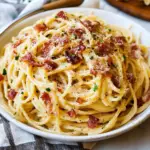
Spaghetti Carbonara Recipe
5 Stars 4 Stars 3 Stars 2 Stars 1 Star
No reviews
- Author: Clara Rosewood
- Total Time: 25 minutes
- Yield: 4 servings 1x
- Diet: Gluten Free
Description
Spaghetti Carbonara is a classic Italian pasta dish known for its creamy, rich sauce made from eggs, cheese, pancetta, and pepper. This simple yet flavorful dish requires just a few ingredients but delivers a deliciously indulgent meal. It’s perfect for a quick weeknight dinner or a special occasion with minimal prep time and maximum flavor.
Ingredients
- 12 oz spaghetti (or your favorite pasta)
- 2 tablespoons olive oil
- 4 oz pancetta or guanciale, diced
- 2 large eggs
- 1/2 cup grated Pecorino Romano cheese
- 1/2 cup grated Parmesan cheese
- Freshly ground black pepper, to taste
- Salt, to taste
- 1 garlic clove, smashed (optional)
- Fresh parsley, chopped, for garnish (optional)
Instructions
- Cook the pasta:
- Bring a large pot of salted water to a boil and cook the spaghetti according to package instructions until al dente. Reserve 1 cup of pasta water before draining.
- Cook the pancetta or guanciale:
- While the pasta is cooking, heat olive oil in a large skillet over medium heat. Add the diced pancetta (or guanciale) and cook until crispy, about 4-5 minutes. If using garlic, add the smashed clove to the skillet for the last minute of cooking for extra flavor, then remove and discard it.
- Prepare the carbonara sauce:
- In a mixing bowl, whisk together the eggs, Pecorino Romano cheese, Parmesan cheese, and a generous amount of black pepper until smooth and creamy. Set aside.
- Combine the pasta and pancetta:
- Once the pasta is cooked and drained, add it directly to the skillet with the crispy pancetta. Toss to combine and coat the pasta in the rendered fat.
- Make the carbonara:
- Remove the skillet from the heat and immediately pour the egg and cheese mixture over the hot pasta. Quickly toss the pasta to coat evenly in the sauce, adding some reserved pasta water a little at a time to achieve a creamy consistency. The residual heat from the pasta will cook the eggs, creating a velvety sauce.
- Serve:
- Season with additional black pepper and salt to taste. Garnish with chopped fresh parsley if desired, and serve immediately.
Notes
- For a richer carbonara, you can use all Pecorino Romano or substitute with a blend of different cheeses.
- Be sure to toss the pasta quickly after adding the egg mixture to avoid scrambling the eggs.
- Guanciale (cured pork cheek) is the traditional meat used in carbonara, but pancetta is a good substitute if you can’t find guanciale.
- If you like a bit of extra flavor, you can add a splash of white wine to the pan after cooking the pancetta before adding the pasta.
- Prep Time: 10 minutes
- Cook Time: 15 minutes
- Category: Main Course
- Method: Stovetop
- Cuisine: Italian

 Brown Sugar and Coconut Body Scrub Exfoliates
Brown Sugar and Coconut Body Scrub Exfoliates 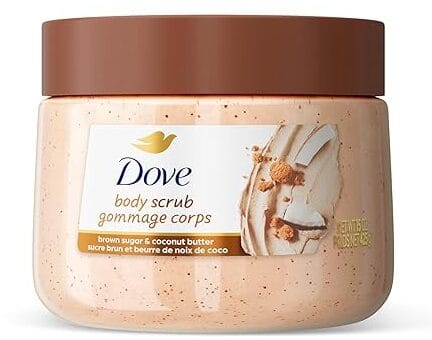
 Get The Product!
Get The Product!